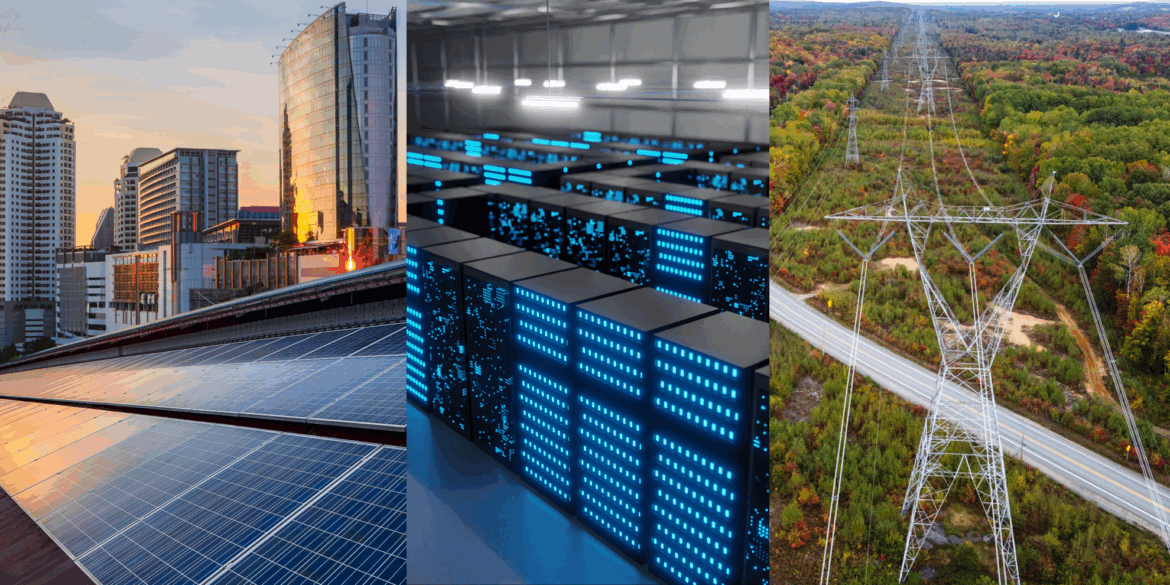In the time since my New Year’s blog in January, national attention has shifted to Congress and the passage of the “One Big Beautiful Bill.” While the renewable energy industry continues to digest the bill’s implications, the Clean Power Research® team has been hard at work advancing our vision of a “clean-powered planet.”
This update highlights what we’ve accomplished so far in 2025 to improve utility programs and operations—and to advance the energy transformation across the U.S., Canada and beyond.
PowerClerk®: 3 million projects and counting
I’m excited to share that PowerClerk®, the industry’s leading workflow automation solution, has now processed more than 3 million projects on behalf of utilities and energy agencies. Originally built to streamline utility incentive processing, PowerClerk handles automation for 175+ utility programs and workflows, from the simple to the complex, including distributed generation (DG) and large load interconnection processes.
In one of our latest customer briefs, FortisAlberta—a Canadian utility—reduced processing time by 80% using PowerClerk.
Utility-scale interconnection: tackling the backlog
Many utilities and ISOs/RTOs seek efficiencies in transmission and distribution interconnection, where it is common to have delays and backlogs across the many stakeholders, jurisdictions and processes involved. Many organizations with these challenges rely on scalable, flexible solutions from Clean Power Research to manage growing workloads across developers and internal teams.
We’re proud to see PowerClerk delivering real workflow efficiencies in transmission interconnection projects. A standout example is Arizona Public Service (APS), which efficiently streamlined large project interconnection—generators and loads—using PowerClerk. Recently, Clean Power Research co-presented with APS at the DTECH Data centers and AI Conference where we talked about managing large load connection queues and clusters with PowerClerk.
A focus on innovation and partnerships
We’re especially excited to highlight these areas of product innovation and partnerships:
- AI attachment analysis in PowerClerk
- FleetView® for DER data and insights
- Supporting grid flexibility with integrated information flows
- Using PowerClerk for service requests
- New partnerships with envelio, MEPPI Smarter Grid Solutions and ScottMadden
AI Attachment Analysis in PowerClerk
We introduced AI assisted workflow automation in PowerClerk at DISTRIBUTECH this year. The new AI Attachment Analysis feature transforms how utilities review file attachments—boosting both speed and accuracy.
This AI-assisted review process maintains human oversight and is fully configurable using no-code design tools, making it easy to tailor to utility needs.
FleetView for scalable DER data and insights
Electric utilities face growing planning challenges driven by DERs such as solar PV and EVs. Traditional planning methods often leave blind spots. FleetView®—launched in March—closes that gap by providing behind-the-meter DER insights that support accurate forecasting and grid planning. While FleetView does not require PowerClerk to operate, it immediately complements PowerClerk programs by enabling rapid visualization and modeling of DG resources.
FleetView delivers reliable DER simulations for load forecasting and grid impact analyses. For example, three Exelon companies (Atlantic City Electric, Delmarva Power and Pepco) use FleetView to improve power flow analysis and load forecasting by accurately estimating customer gross load hidden by behind-the-meter PV.
Learn more in our FleetView blog and Exelon case study.
Supporting grid flexibility with integrated information flows
Clean Power Research is accelerating distribution grid flexibility with pre-built integrations between our products and grid management and modeling partners. We accelerate utilities’ ability to target, model and enroll customers and their DER assets in Demand Response (DR), DERMS and VPP programs.
FleetView simulations not only help improve load forecasting and grid impact analyses, they also can provide insights to better profile and target customers. PowerClerk’s automated workflows and data validation features ensure that DER asset data is of the highest quality. Its flexible and often pre-built API integrations can seamlessly flow this clean data into and between a utility’s planning systems, helping to accelerate the DER enrollment process.
PowerClerk for service requests
PowerClerk continues to gain traction with utilities to manage service requests. Service requests generally include new services, upgrades, temporary connections and reactivations. Public Service Company of New Mexico (PNM®) faced growing demand and inefficient manual processes for their new service requests, leading to delays and customer complaints. With nearly 12,000 requests annually, they needed a more scalable solution.
PNM adopted PowerClerk to streamline workflows using standardized forms, parallel processes, role-based access and document uploads. The result: improved coordination, faster timelines and better communication from design through energization.
Read more in our detailed PNM customer brief.
New partnerships
Expanding our third-party partnerships extends Clean Power Research’s services, enabling us to offer more comprehensive solutions to utilities. We’re excited to launch new partnerships to enable faster distribution grid flexibility and aggregation programs with our newest grid management and modeling partners envelio and MEPPI Smarter Grid Solutions. We’ve also recently announced a new partnership with ScottMadden, a management consulting firm specializing in energy, infrastructure and shared services. The partnership integrates best-in-class technology with tailored business process design.
Moving forward
While national energy policy continues to evolve, I’m proud of how Clean Power Research is staying focused on delivering real solutions that materially advance our vision of a “clean-powered planet.” I’m excited about the incredible accomplishments thus far this year. Despite some headwinds, I remain optimistic about the growth of solar and energy storage (both utility-scale and distributed), EVs, and the technologies emerging from labs (and maybe even garages!) that will drive the next wave of renewable energy progress.
I’ll be back with another update to close out 2025!
Interested in a demo? If you work for a utility or energy agency, you can request a demonstration of any of the products or services mentioned in this blog by contacting us.
If you like these updates, we post a monthly newsletter to our LinkedIn page, please consider subscribing.
